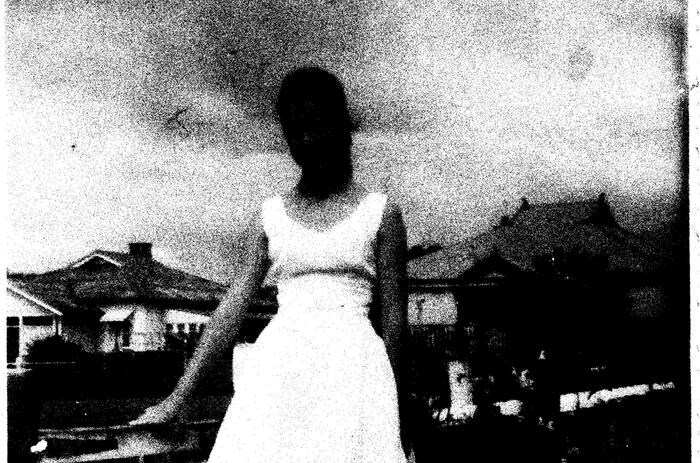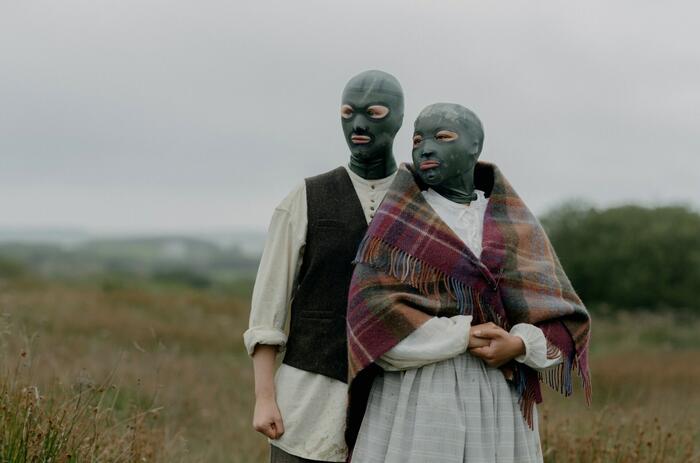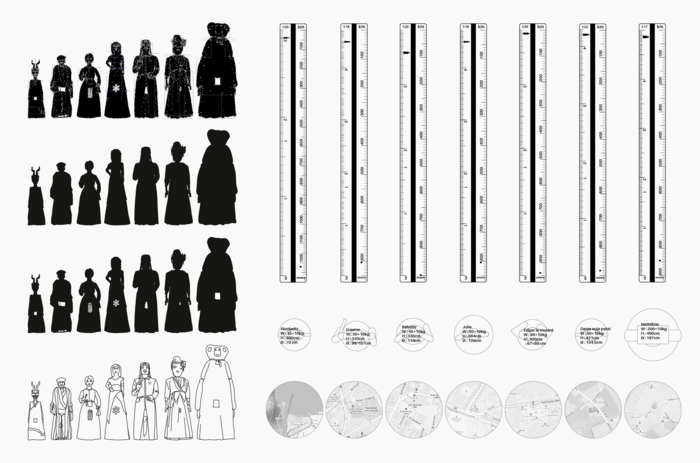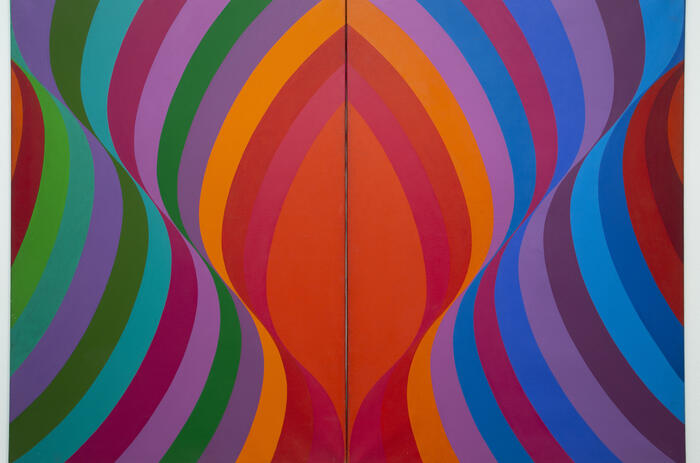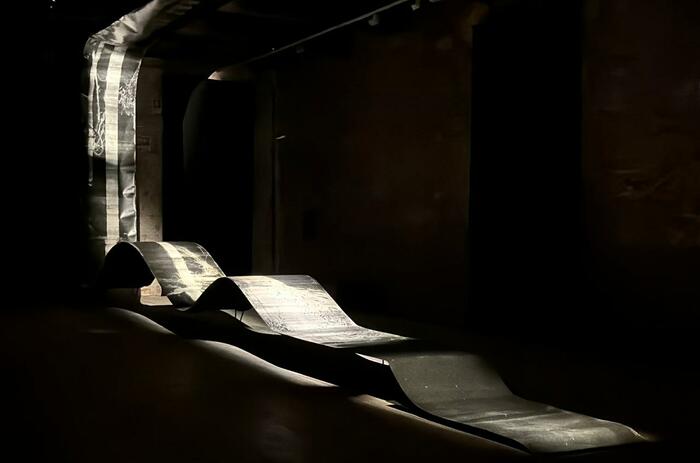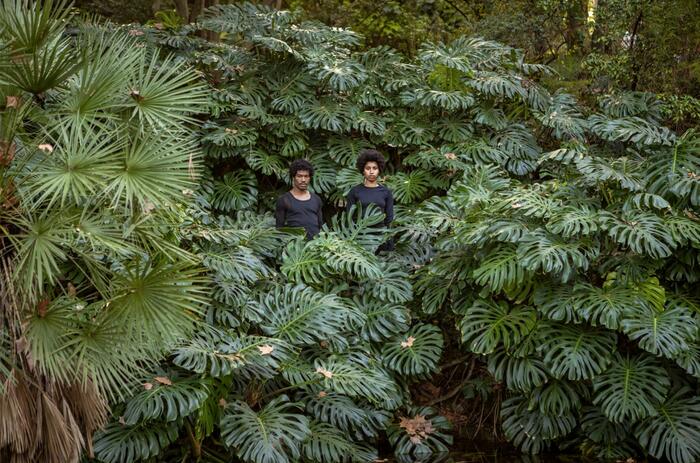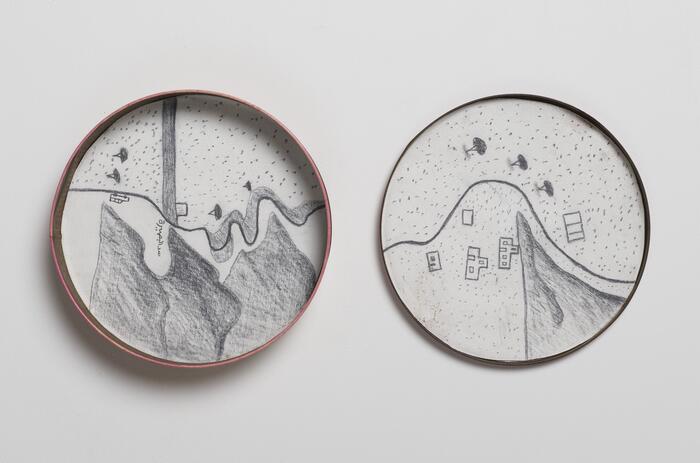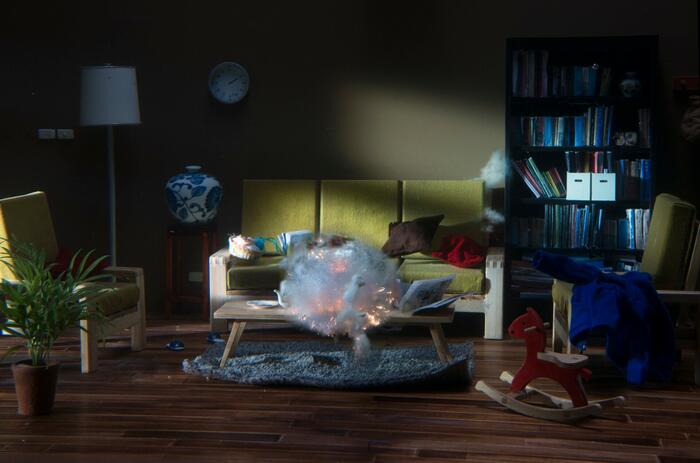HORA LUPI: ESTONIAN PAVILION AT THE VENICE BIENNALE
Edith Karlson will present Hora lupi for the Estonian Pavilion at the 60th International Venice Biennale from April 20 until November 24, 2024. Presented at the church of Chiesa di Santa Maria delle Penitenti, the exhibition explores primitive human urges in their banality and solemnity and questions the possibility of redemption in a world that is never worthy of it.
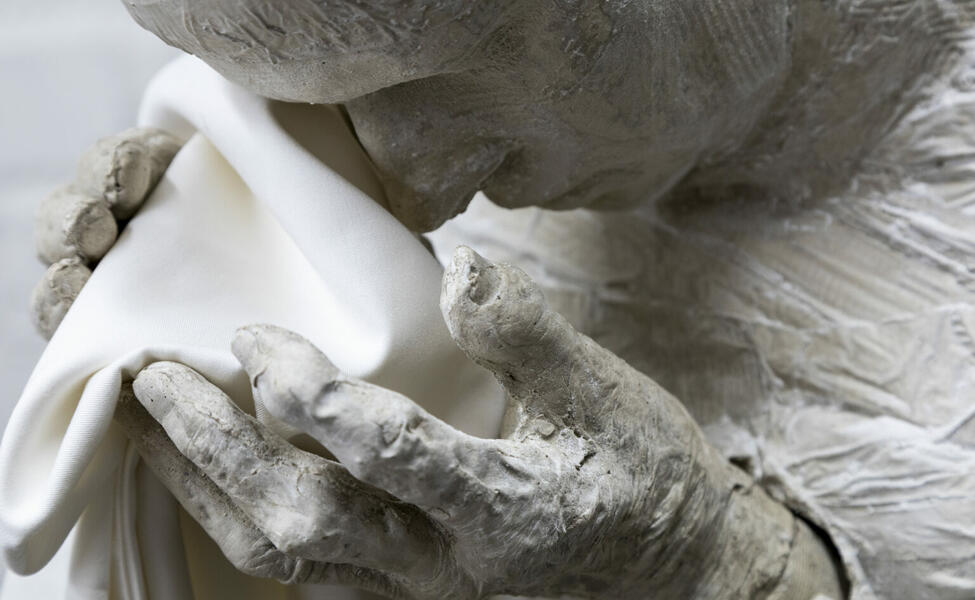
Located in Cannaregio overlooking the district’s canal, the arresting interior of the church, which dates back to the 18th century, helps to build the emotional atmosphere of the exhibition. Everything is left unchanged, even the dust of the centuries past remains. Lying in abandonment, Karlson uses the space as a metaphor for being human, equally sad, and incomplete. Full of cracks and fissures, through which eventually, perhaps, a redeeming light will shine. The exhibition spaces are filled with clay and concrete sculptures that evoke the inevitable misfortune of being born, and the always-endeavoring nature of being human.
The title of the exhibition Hora lupi (hour of the wolf) refers to a mythical time before dawn, when things arise and disappear—an hour of deep darkness but also of transformation. It is believed to be the time of night, when the most people are born and die. The exhibition centers around a vast series of hand-crafted clay self-portraits created by people who surround the artist: children and elderly people, state officials and common workers—a gallery of contemporary faces that will someday become their memorial. The sculptures are inspired by the 14th century terracotta sculptures in St. John’s Church in Tartu, Estonia, most likely depicting townspeople of the time. It has been suggested that the sculptures are a memorial ensemble commemorating the victims of the plague.
For Hora lupi, Karlson presents an existential narrative of the animalistic nature of humans. Depicting that the sincerity and bluntness of instinct can sometimes take a brutal and violent form, but also poetic and at times a little absurd, gentle, and melancholy. So, the theme of the exhibition for the Estonian Pavilion at La Biennale Arte 2024 could be concluded as “our world today”.
-
Edith Karlson. Hora lupi. Works in progress. Photo: Anu Vahtra/Estonian Centre for Contemporary Art
-
Edith Karlson. Hora lupi. Works in progress. Photo by Anu Vahtra/Estonian Centre for Contemporary Art
-
Edith Karlson. Hora lupi. Works in progress. Photo: Anu Vahtra/Estonian Centre for Contemporary Art
-
Edith Karlson. Hora lupi. Works in progress. Photo: Anu Vahtra/Estonian Centre for Contemporary Art
About Edith Karlson
Edith Karlson is a sculptor who often presents her work as installation, using an entire exhibition space. Her works tackle the most inexplicable feelings and sensations in the current world: fear, melancholy, brutality and joy, which she transforms into material form, often in clay, concrete or found materials. Frequently working with animal forms and anthropomorphic figures, she approaches humans as animalistic beings whose impulses, wants, and desires are hidden just under the surface of their well-pressed suits.
Karlson studied installation and sculpture at the Estonian Academy of Arts (BA, 2006; MA, 2008). She was awarded the EAA Young Artist’s Prize (2006) and Köler Prize People’s Choice Award (2015). Karlson is among the recipients of the national artists’ salary between 2018-2020 and 2022-2024 and was granted the Estonian Cultural Endowment’s main award (2021).

